
Mystery of the Holy Grail Revealed
Spoiler alert, the mysterious, lost, gold and bejeweled Cup of Christ also known as the Holy Grail is nether mysterious, lost, golden, bejeweled nor a grail. However, the truth concerning this object is much more believable and meaningful than the fables that have grown up around it.
Every good story, no matter how fanciful is more compelling if it contains a grain of truth. It is the initial truth of a story that helps draw a person into the storyline. It gives the story authenticity and allows the teller the ability to skillful start to blend fact with fiction making the story all the more entrancing to an audience. This has been the case with many well-known stories including an ancient one concerning the cup Jesus used at the Last Super. It would be this story that would become the most famous of all adventure stories starting with the tales of King Arthur up to a modern retelling by noted author Dan Brown. It is a mystical tale concerning the quest for the most sought after yet illusive treasure among treasures... the Holy Grail.
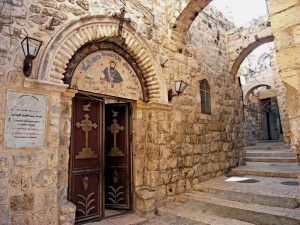
The story begins on Thursday, April the 2nd, 33 A.D just one day before the Jewish Feast of Passover. Jesus had secretly made plans to hold a supper with His disciples in the city of Jerusalem on the second floor of a private home located directly adjacent to the Temple complex. Tradition states that the house was owned by a wealthy couple who were followers of Jesus and the parents of a teenager whose name was John Mark. Some Biblical scholars believe this is the same Mark who would write the Gospel of Mark. Because Scripture tells us that the disciple Peter personally mentored Mark, the information in this Gospel is thought to be a compilation of the remembrances of Mark combined with those of Peter (Acts 12:12-14; I Peter 5:13). Bishop Papias of Hierapolis (60 A.D.-130A.D.) wrote, “Mark became Peter’s interpreter and wrote accurately all he remembered, not, indeed, in order, of the things said and done by the Lord.” (Ecclesiastical History, Book II, Chap. 15)
Jesus Himself had prearranged to have the room available that evening where He would serve as host of the supper (Mark 14:13; Luke 22:10). In this capacity, He would have invited and welcomed His disciples, served as master of ceremonies for the timing of the topics of conversation the courses of food, and decide when to bring the dinner to a close. It would be during this supper that He would reveal a series of prophetic events destined to establish a new religious movement that would profoundly change the world. However, the disciples assumed that this would simply be a pre Passover dinner much like the two previous ones they had celebrated with their spiritual leader. Except that now there was some extra anticipation attached to this particular dinner and Passover as opposed to the earlier ones. Here’s why.

On Sunday, Jesus had deliberately ridden through the Golden Gate of Jerusalem on the colt of a donkey. This event was seen by the public as satisfying an ancient five hundred year old prophecy concerning the arrival of the Messiah (Zechariah 9:9-10). And, this deliberate act with its prophetic meaning was not lost on the crowds attending the coming feast nor the religious authorities. The people that witnessed this sight roared with approval putting coats and palm leaves in front of Jesus to create an impromptu carpet fit for the arrival of what they hoped to be the new King of Israel. The atmosphere of Jerusalem was now electrified with everyone waiting for Jesus to make the announcement the Jewish race had longed to hear since the rebuilding of the city’s wall some 483 years earlier (Daniel 9:24-27). While the disciples had no idea that what was about to transpire over the course of this dinner, the outcome would be the most important series of revelations in this history of mankind.
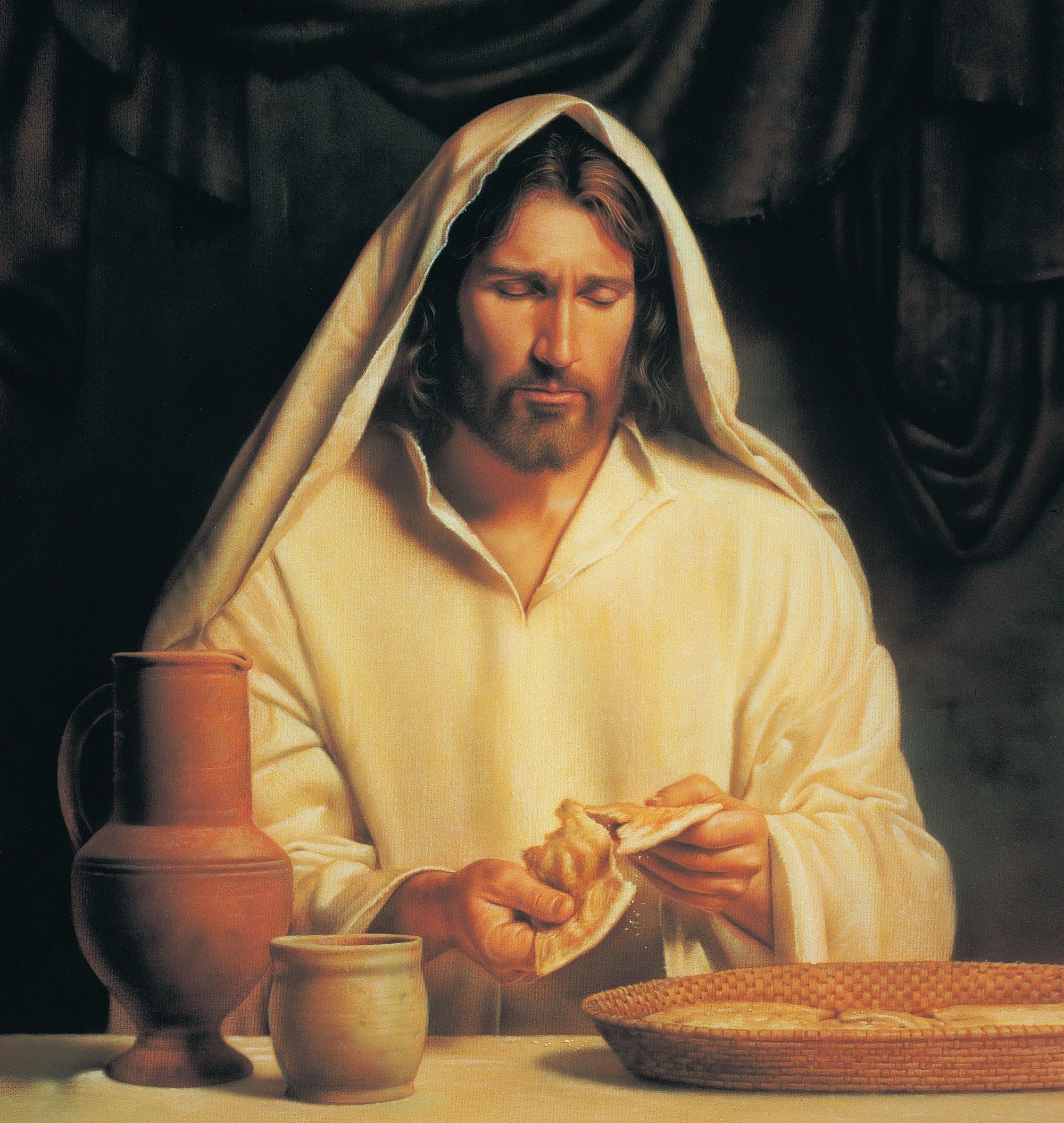
The following is a compilation of the four Gospels including Paul’s account found in I Corinthians. During the meal, Jesus took the unleavened bread, gave thanks, blessed it, then broke it, and gave it to the disciples saying, “…take, and eat; For This is My body which is given and broken for you: Do this in remembrance of Me. ” (Matthew 26:26; Mark 14:22; Luke 22:19; 1 Corinthians 11:24) He then said, “… I say to you, I will not eat anymore according to the shadow ordinances of ceremonial law as they are now fulfilled in the Kingdom of God.” (Matthew 26:29; Luke 22:16) “In this same way, He also took the cup, and when He had given thanks, he sipped of it, then gave it to His disciples saying, ….Take this and divide it among yourselves and all of you drink of it; For this cup is the new covenant/testament {consummated} in My blood which is shed for you and many for the remission of sins.” (Matthew 26:27-28; Mark 14:23-24; Luke 22:17, 20; I Corinthians 11:25) He then said, “I say to you that I will not drink again of this fruit of the vine, until the Kingdom of God shall come. And on that day I will drink it new with you in My Father’s Kingdom.” (Matthew 26;29; Luke 22:18) He then said, “… This you are to {continue} do, and as often as you drink it, do so in remembrance of me.” (I Corinthians 11:25) “For as often as you eat this bread and drink this cup you will show {commemorate} the Lord’s death until He returns.” (I Corinthians 11:26) And when the meal ended, and they had sung a Passover hymn, He came out of the house followed by his disciples and led them, as He desired, directly into the Mount of Olives." (Matthew 26:30; Mark 14:26; Luke 22:39; John 18:1)
It is during this supper that we hear for the first and only time about Jesus using a cup. The three toasts and the announcement of a new covenant were all made by Him using this cup. In announcing His New Covenant, He stated that the wine in His cup now symbolically represented His blood that would be spilled to consummate this covenant instead of the blood of an animal. And, that the spilling of His blood and death would create a new more perfect and eternal covenant between Himself and God the Father concerning the salvation of mankind. So this cup was recognized in a literal, figurative and prophetic sense. Literally, the cup held wine. Figuratively, the wine was now symbolic of His blood. Prophetically, His death, burial and resurrection would consummate this covenant. And, through His resurrection from the dead, God would show that this covenant was in His will. However, there is no mention that the cup itself was special in any way nor brought to the supper especially for this event. Scripture is clear that the only significance of the cup was that it held the red wine that was now symbolic of the blood of Christ that would be shed for the redemption of many. Thus, the cup was only tangentially involved in this announcement and is given in and of itself no supernatural element in Scripture.
Jesus ends the supper by leading His disciples to a private garden known as the Garden of Gethsemane. Scholars believe that the parents of John Mark also owned this garden and had previously allowed Jesus to meet, and at times camp there with His disciples during the seven annual Jewish feasts. It was in this garden that Jesus, while praying, made a reference to a second cup. But this cup was not literal in the sense that it was an actual physical cup like the one He used at the Supper to hold the wine. This cup was instead figurative and prophetic.
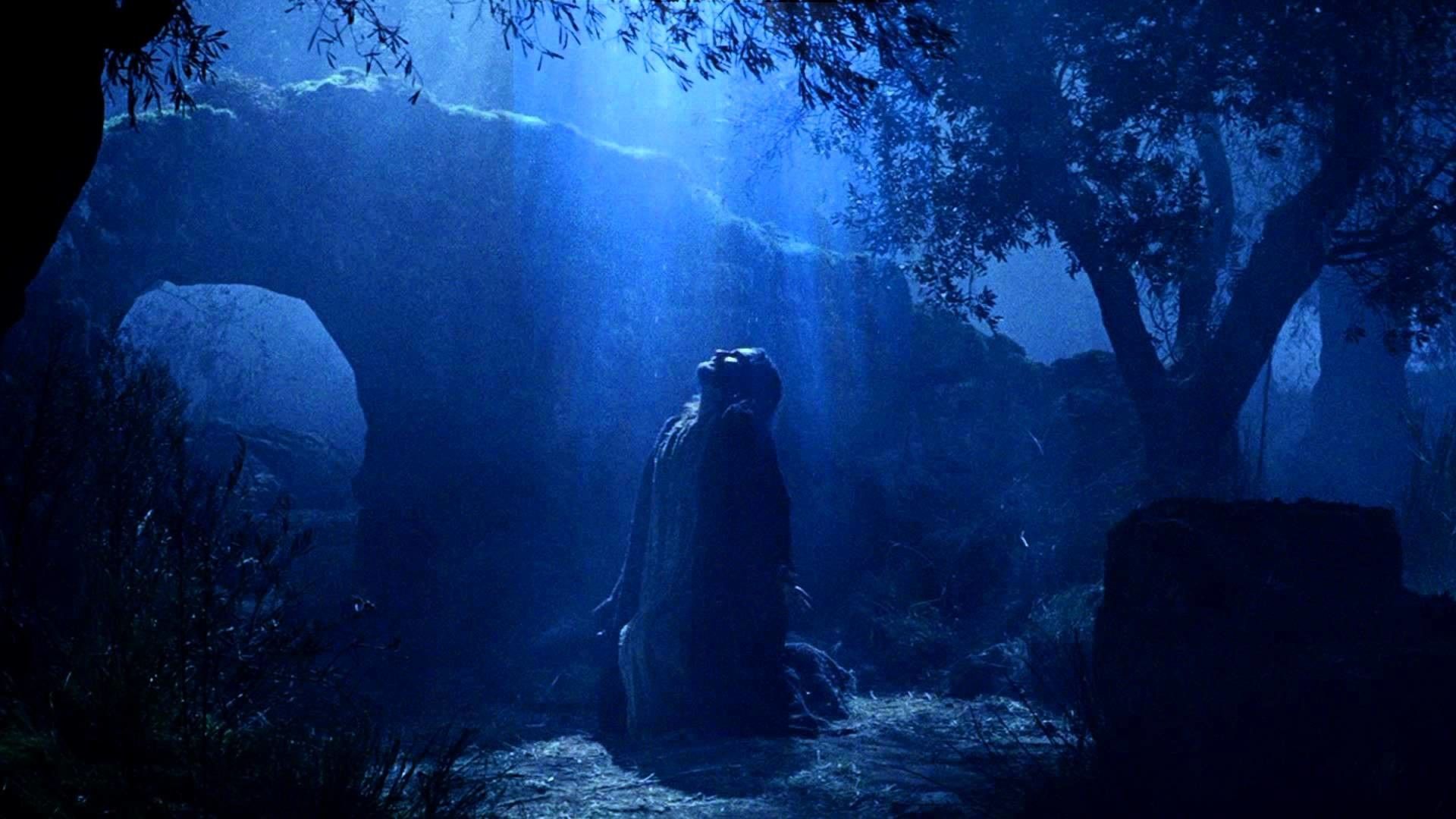
While praying in the garden, Jesus made a singular request to God the Father three separate times. This was the only request made by Jesus to His Father in which He received no answer. He requested that, if it be in His Father’s will, to take this cup away from Him. The cup in question was a symbolic cup that would be filled to the brim with all the iniquities of mankind from Adam until the death of the last sinful person which will occur at the end of the Millennial Reign of Christ (Revelation 20:9). For Him to voluntarily take and drink the symbolic contents of this cup would not only make Him the most sinful man to ever live, it would also bring upon Him the full undiluted wrath of a righteous God. He would literally become the most perfect human personification of sin in its purest form to ever exist. This does not mean that Jesus was or became a sinner. It means that Jesus, as the only person who never sinned, would voluntary allow himself to be indwelled with all the past, present and future sins of mankind. Then, in this state, He would be judged by a Holy and Righteous God, declared a curse and receive the full withering force of His wrath. So, Jesus who knew no sin, would be indwelled by all the sins of mankind, tortured by His creations, self-sacrificed for their sins and die hanging on a tree, a curse in the eyes of God (Deuteronomy 21:22-23; II Corinthians 5:21).
But incredibly, this was not the overriding fear Jesus was experiencing in the garden. His greatest fear and why He was praying that this cup be removed was the understanding that, for the first time in all eternity, He would be completely separated and forsaken by God both physically and spiritually. We know this was the case because Jesus cried out while on the cross, “…my God, my God, why have you forsaken me.”(Matthew 27:46; Mark 15:34) It would be this second symbolic cup that would also figure prominently in the mission and subsequent iconology of Christ.
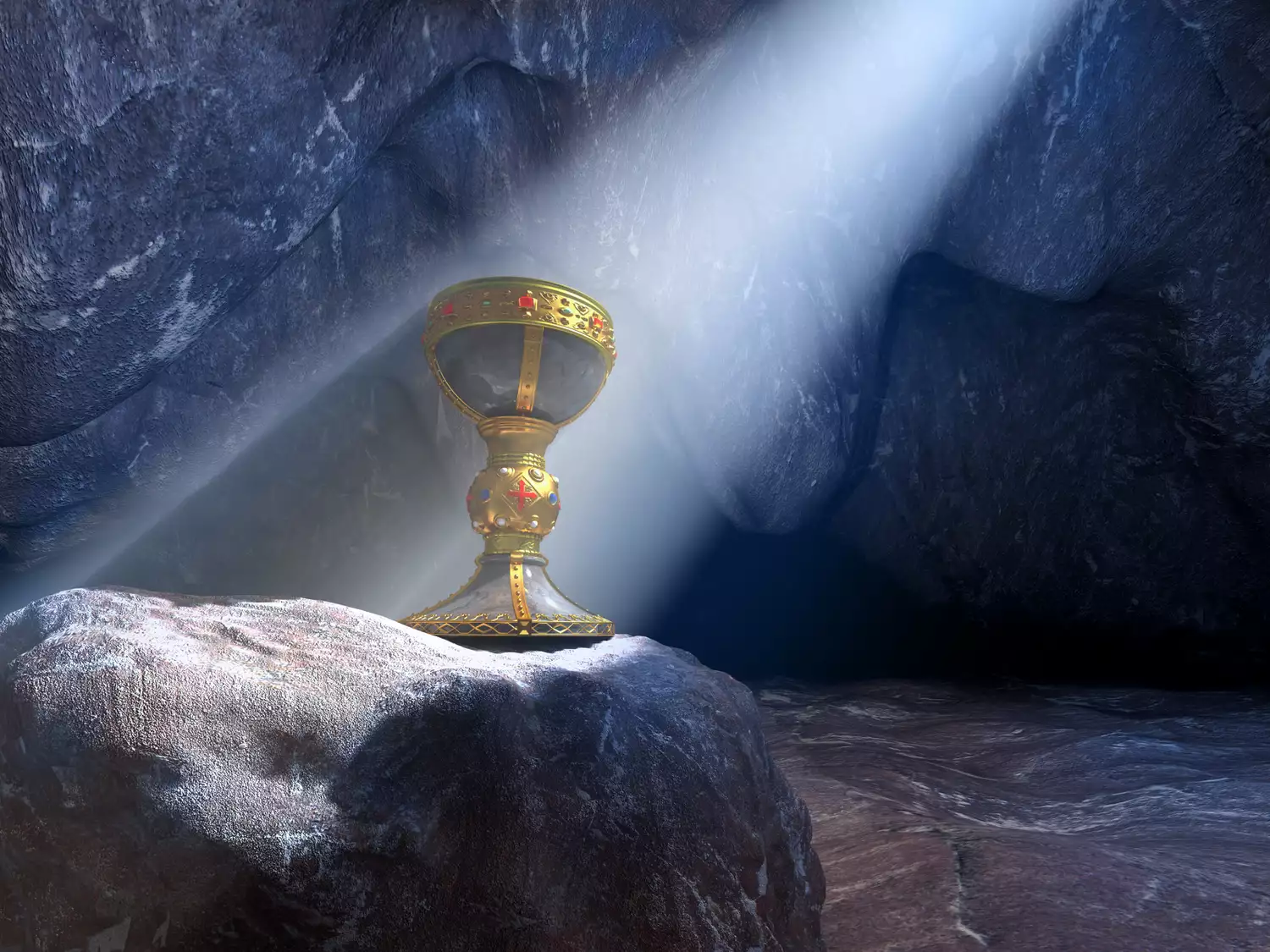
By the end of the first century, there were two major iconic symbols recognized by the Church. The first was the cross and the second was that of a cup. The cup became iconic as it was used by Christ as part of the first communion held at the Last Supper commemorating the creation of a new covenant. And the symbol of the cup would also be remembered as the Cup of Iniquities that Jesus took on Himself.
Immediately after the ascension of Christ, the disciples now considered Apostles, were meeting in private homes and buildings to commune with other followers and to pray. It was also at these times that they would partake in a communion that involved the eating of bread and drinking wine from a cup in His name just as He had requested (Mark 14:22-24; Luke 22:17-20). As congregations became more organized and supported financially by parishioners, funds were raised to purchase a permanent cup to be used during Communion. Some of these cups were made of precious metals or carved using valuable gemstones. So, the importance and reverence of the communion cup was recognized and grew as membership in the Christian movement grew. The cup quickly became the second most recognized symbol of Christianity and many followers wondered if one of the many relics displayed in and around Jerusalem was in fact authentic.
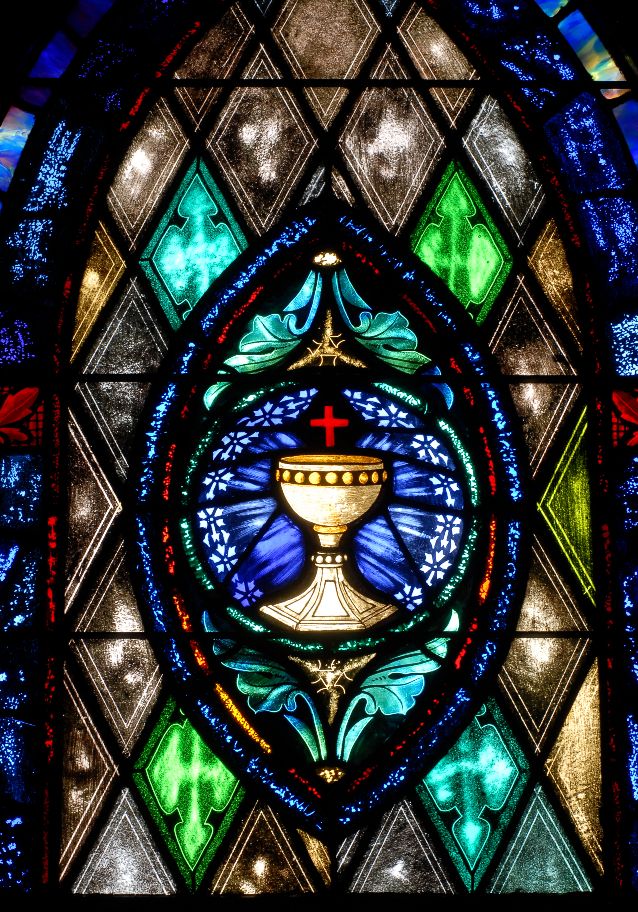
Over the following centuries, drawings, engravings and stained glass featuring the cross and a cup were commonly found in places where followers met and prayed. Those pictures that showed the cup in reference to the garden were sometimes aggrandized. They were depictions of God literally reaching down from heaven and presenting the cup of iniquity to Jesus while He prayed. This was not meant to be an actual representation of this event. But, once this cup was seen as coming directly from God, it would need to be golden and embellished with precious stones. This event in the garden would also be remembered as the last time that the Father, Son and Holy Spirt were together on earth to mark this momentous occasion. To this day, most images of a cup associated with Christ are usually pictured as bejeweled gold or silver chalices with a long stem.
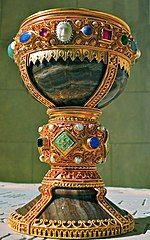
In 570 A.D and 680 A.D. two pilgrims to the Holy Land wrote in their journals that they both saw and were told of many relics displayed at the basilica built by Constantine that encompassed Golgotha and the Tomb of Christ. Among these relics was the cup of onyx that the Lord blessed at the Last Supper and also the sponge presented to Jesus while on the cross. So, we know by this early time, the church in Jerusalem was telling millions of visiting pilgrims that the cup Jesus used at the Last Supper still actually existed. And we know that by this time the symbol of a cup had become iconic within the Christian religion. Therefore, it was only a matter of time before an author, realizing the wonder and adoration the cup engendered in the minds of Christians, would incorporate the cup into a storyline. And by doing this, they would increase readership interest, sell more copies and thus make more money.
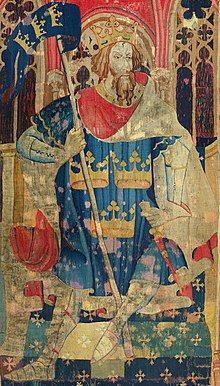
The basis for the very first storyline that would eventually incorporate the cup began in 410 A.D. when Rome decided to withdraw its troops from Brittan. This decision caused the Saxons or German armies to invade the British island. Many feudal kings engaged in battles with the Saxons but the story of a king by the name of Arthur stood out. He was noted by the Welsh poet Anririn in the 6th century as being the bravest and most virtuous of all kings and credited as playing the pivotal role in driving the Saxons from the land. Most historians do not consider Arthur an actual historical figure. Instead, he is thought to be a compilation of a number of kings who not only fought valiantly to save their country from invaders but at the same time exhibited Christian moral values. By the eighth century, stories had been written portraying Arthur as fighting and defeating both human and supernatural forces including witches, dragons and even an ancient race of giants. See related: Giants and their Genes
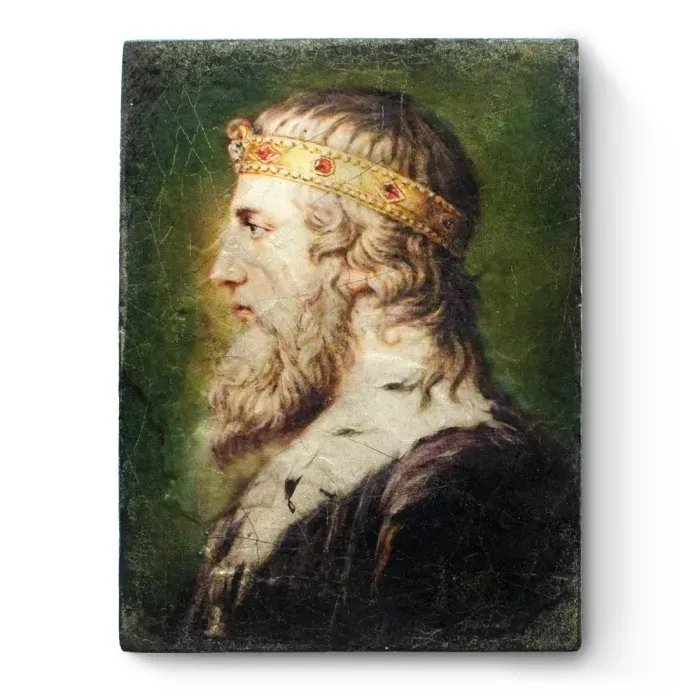
However, Arthur became an international celebrity in 1136 A.D. when Joffrey of Monmouth cleverly stitched together and published his more remarkable adventures in a fictional narrative titled History of the Kings of Brittan. In 1190 A.D. the French writer Chrétien de Troyes added to the storyline the character of a French knight named Lancelot and used for the first time the hyphenated word grail which was a combination of the words great or holy with the word dish.
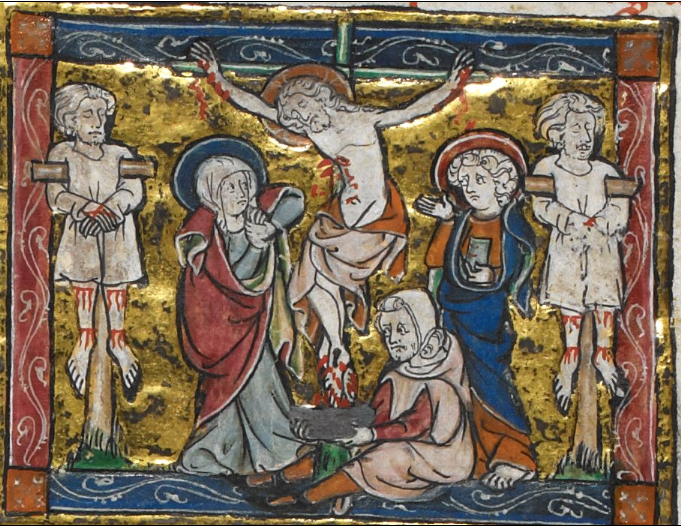
Finally, in 1198 Robert de Boron wrote in his version of the story that the grail was the cup Jesus used at the Last Supper. He also wrote that it was Joseph of Arimathea who took the cup and used it to catch the last drops of blood that came out of the side of Jesus as he was dying on the cross. He stated that it was the blood of Jesus that made the grail Holy and also imbued it with the magical powers of eternal youth and abundant food. Boron wrote that Joseph eventually sent the grail to Glastonbury Brittan for safe keeping. And, upon its arrival, the earth in that area turned blood red. So, Boron created a storyline that at first blush made perfect sense. The cup at the Last Supper that originally held red wine that Jesus referred to as His blood now actually held Jesus’ blood. Joseph, who was cited in Scripture as being at the crucifixion and playing a major role in Jesus’ burial, was also able to catch some of His Holy blood in the cup which then became imbued with magical powers. Boron had to write that Joseph sent the cup to Brittan in order to place it in the vicinity of Arthur’s kingdom. It was sent to Glastonbury Brittan as Boron knew that the soil there is of a red color and Arthur was said to have been buried there. While the soil in Glastonbury is of a reddish color, this is due to the soil containing a concentrated amount of iron deposits.
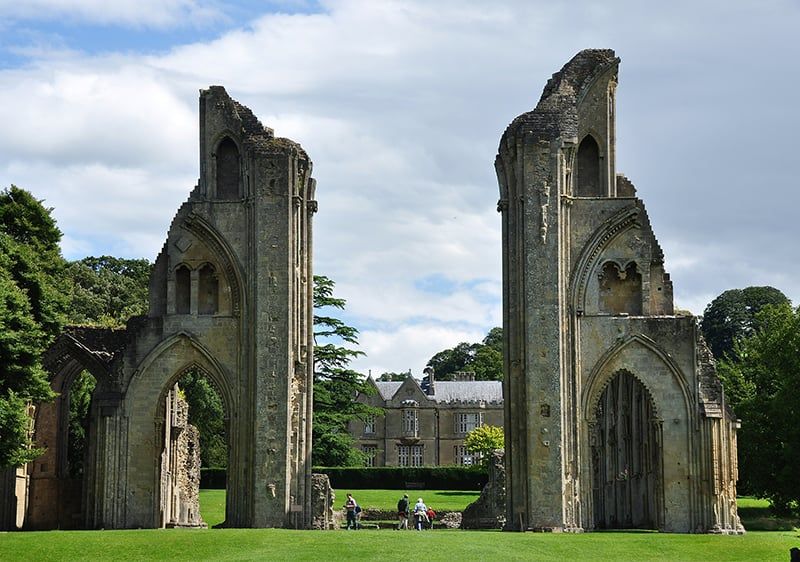
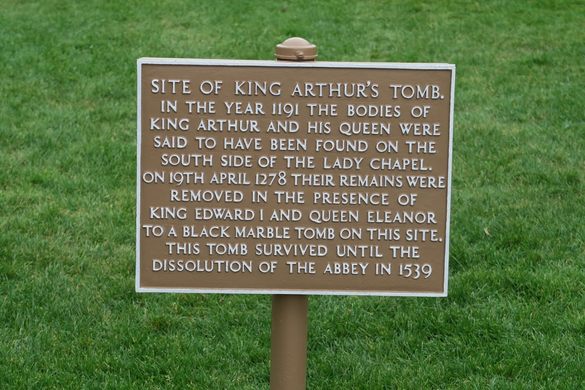
This addition of a Holy Grail into the Arthurian storyline is known as pseudo history or historical fiction. It is an often used as a cleaver literary device in which an actual documented person or event is cited followed by other undocumented additions to the storyline. In other words, a literary bridge is created by linking a documented event to a fictional event. This allows the author to now develop a historical fictional subplot that the reader will find believable as it is linked to the original documented event that the reader knows and believes to be true. Thus, the novel was on every Christians must read list throughout Europe for the rest of the Middle Ages.
Later, the story of the grail was once again modified. The grail was said to have become lost somewhere in Brittan. Thus, the famous Knights of the Round Table were charged with locating it and bringing it back as Arthur was suffering from a mortal battle wound in his castle called Camelot. This was another cleaver literary device that allowed a series of moral tales to be written concerning each knight. This series ended with Sir Galahad being deemed by God as being the most pious of the knights and worthy to obtain the cup. Galahad then took the cup to Camelot and used it to magically heal Arthur. On an interesting note, in the late 1300's, the morality tale of the Green Knight used the word Nowell {Noel} for the firts time in referring to the birth of Jesus.

Just when one would think writers had exhausted all possible plotlines concerning the grail, the writer Dan Brown published a bestselling novel called The Da Vinci Code. In this factious action novel, the grail turned out not to be a cup but instead was Mary Magdalene’s womb. The story ends with the understanding that Jesus and Mary had a child which started a bloodline of Christ. One would imagine that the only grail storyline left unexplored would probably involve an invasion of space aliens. But the truth concerning the cup is actually very straightforward, logical and firmly grounded in the science of archeology.
This brings us to the bottom line question, was the actual cup used by Jesus at the Last Supper saved or lost over time? The answer is that the cup was neither saved nor lost. Again, the cup is not cited in scripture as being a special cup that Jesus or the disciples brought to the upper room for use. Scripture tells us that Judas and other disciples were outspoken concerning what they considered a waste of money when Mary anointed Jesus with expensive perfume (Matthew 26:7-10; Mark 14:3-5). So, just imagine the outburst of indignation that would have occurred if an expensive cup, used only by Jesus, was brought to the Last Supper. Therefore, the cup was obviously provided by the owner of the house in which the supper was held. In fact the Gospel of Mark tells us, “….and he {home owner} will show you a large upper room furnished {furniture} and prepared {table w/place settings}: go there and prepare us the Passover {ritual meal} that we may eat.” (Mark 14:15; Luke 22:7) Second, the owner would not have known that Jesus was about to reveal a history changing new covenant to replace the failed Mosaic covenant. Therefore, he would have supplied the gathering with the existing household cups commonly used for Jewish meals while making sure that the Temple authorized type cup(s) was also available to be used during Jewish feast ceremonies. Third, no one but Jesus knew that He would be arrested only hours after the meal, tried and crucified by 9:00 AM the next morning. Therefore, no attention was paid to the cup as it was simply one of thirteen cups used during the meal. Scripture only tells us that Jesus and all His disciples were present at this particular supper. However, if the owner of the house with his wife and son John Mark were also present, there would have now been sixteen or more cups in the room.
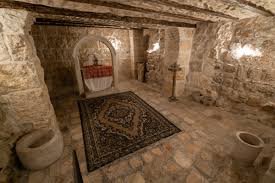
So, what happen to the cup after He left the upper room? Well, as when most large dinners are over, the guests leave and the household staff come in and clear the tables of plates, cups and napkins. These articles would have been washed and dried according to Jewish purity laws. The excess food would have been saved as practical, the room would have then been wiped down, swept clean and set up for the next day’s event. In this case, the room would have been readied in anticipation of Jesus using it to celebrate the Passover Feast with His followers Friday evening. So the cup was not lost nor found nor misplaced. Is was simply rinsed out with the other cups and made ready to be use again.
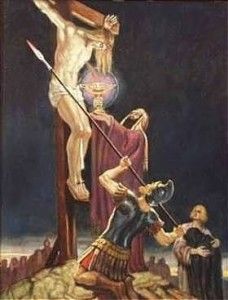
With this in mind, how could Joseph of Arimathea possibly have come to possess the cup and use it at the crucifixion to catch the blood of Jesus while He was on the cross. The obvious answer is, he could not have done this! First, at the time of the supper, Joseph was a secret follower of Jesus (John 19:38). Because he was a man of great wealth and power, if he had been present at the supper, he would have definitely been mentioned in scripture. But Scripture only states that the disciples were present. Second, Joseph was also not aware at this time that Jesus would be executed Friday morning. He found out that Jesus had been tried Thursday night by the Temple priesthood when a messenger informed him just before sunrise Friday morning. He was also told at this time that the High Priest Caiaphas had formally requested an emergency meeting of the civil Sanhedrin Council to be held within the hour (Mark 15:1). Therefore, at no time would he have had knowledge of nor access to the cup. Third, Joseph was probably not even aware of the supper Jesus had hosted Thursday night. Therefore, the idea that Joseph went to the upper room on Friday to find the cup, then took it to the crucifixion site where he approached the cross and used it to catch the blood of Christ is incredulous. As a secret follower, he would not have walked up to the cross in front of a large gathering of religious leaders who were there to witness and certify Jesus’ death (Matthew 27: 39-43, 47-49). Further, the idea that he would have been allowed by the supervising Roman centurion and his crucifixion squad members to catch Jesus blood in a cup is absurd. While it is true that Jesus’ mother was allowed to stand or sit adjacent to the cross, this was only because the screams and wailings of a parent was seen by Rome as a tremendous way to heighten the horror of a person being crucified for sedition against Roman rule. Family and friends could call out words of encouragement to the condemned, but not to touch or directly assist them in any way (John 19:25).
So, the idea of the cup Jesus used at the supper being preserved to catch His blood while on the cross is not only completely undocumented in any written account during the first century, it is also a physical impossibility. Blood can only issue from a living person. Once a person’s heart stops pumping, a person is dead and they can no longer bleed. Actually, the citing in scripture of a sword being thrust into the heart of Jesus is proof that He had in fact died immediately after He commanded His spirit into the hands of God the Father. All soldiers trained in the art of crucifying a person were taught how to take a specially designed spear with a long thin blade, place the tip between the third and fourth rib, then thrust it up and directly into the heart. If the person was alive, blood would issue from the wound and the person would quickly die. In the case of Jesus, scripture cites that when the spear was thrust into His side, only a light pinkish colored water came out of the wound (John 19:34-35). This can only mean that Jesus was already dead and the spear, puncturing the paracardial water sack that surrounds the heart, caused this somewhat clear liquid to issue from the wound and not blood. So, even if Joseph had been present at this moment, he could not have caught blood in his cup as scripture clearly states that there was no blood to catch.
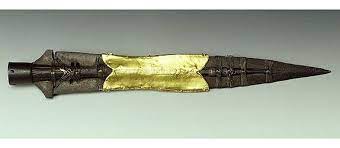
On an interesting note, there are extremely few artistic renderings of Jesus being pierced on His left side. John states that Jesus' "side was pierced" but he does not say which side (John 19:32-35). It has been assumed that picturing Jesus being pierced on His right side was artistic symbolism. Scripture states that Jesus has the righteous put on His right and the unrighteous on His left (Matthew 25:33). However, while it is improbable, it is completely possible that Jesus could have been pierced on His right side and the spear still went into His heart. Here is how. There is a rare genetic condition in which people are born with their internal organs in a reversed or mirrored position. This condition is known as Situs Inversus. If Jesus was born with this condition, then His heart would have been normal but located on His right side.
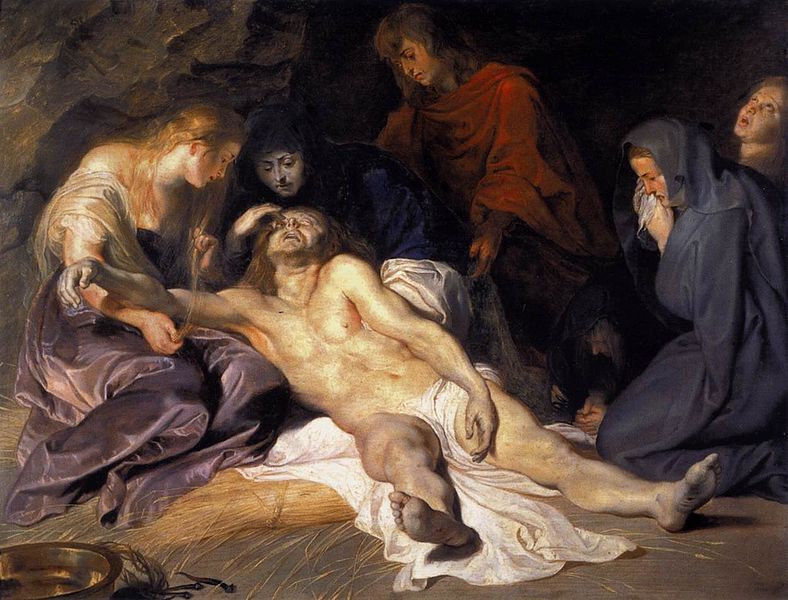
It is true that Joseph is cited as being a secret follower of Jesus, not voting for His execution, being an eyewitness at His trial and crucifixion, asking for and receiving official permission from Pilate to take custody of the body, helped to remove the body from the cross, helped embalm the body and helped place it in his tomb (John 19:38-42). So there was a brief time in which Joseph could have theoretically scraped some dried blood off the skin of Jesus and place it in a container of some kind. Had he done this, it would have been seen as a way for a devoted supporter of Jesus to take a cherished touchstone away from an otherwise brutal execution. Jesus showed His obedience to God and His love for mankind by bleeding out on the cross. And what better way to capture this moment than to preserve some of Jesus’ blood as a sacred relic. But, this act of preservation was not noted in scripture along with all the other many and varied accounts attributed to Joseph concerning the execution and burial of Jesus.
It is obvious that this act is not listed in scripture because it did not happen. And, once Jesus arose from the dead, the entire trauma of His dying became a distant memory as it was His resurrection from the dead that was now celebrated. Thus, it was not the cup that was ever of any importance, it was the symbolism of the wine in the cup as His shed blood that was important. It was not the unleavened flour that made the bread nor the platter on which the loaf was served that was important, it was the symbolic breaking of the bread that was important. It was symbolic of Jesus who was without sin or leaven yet freely allowing Himself to be broken to insure the remission of the sins of mankind.
So now we know what happened to the actual cup that Jesus used at the Last Supper. We also know that at no time did Joseph obtain that cup nor did he catch Jesus’s blood during the crucifixion. This was all a what if literary hyperbole purposely written one thousand two hundred years later to increase interest in the storyline of a romantic medieval novel by mixing documented events involving Christ with fictional events involving a King named Arthur. So, what was the cup that Jesus used at the last supper?
Unfortunately early Church fathers were quick to designate a number of false relics as being connected with the ministry of Christ. These relics included a growing number of contenders for the title of the Cup of Christ. It is obvious that they did not take into account the Temple’s late first century B.C. ruling that a cup used by a Jew during a Jewish feast must conform to strict guidelines as to the material it was made of. Instead, the relic collectors tried to outdo each other apparently based on descriptions of the cup as cited in the Arthurian novels. And, as different writers created different descriptions of the grail in their stories, relics were created and collected that best conformed with those descriptions and what pilgrims expected to see. Today there are no less than two hundred cups to consider. Here are the top five finalists.
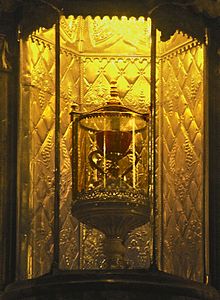
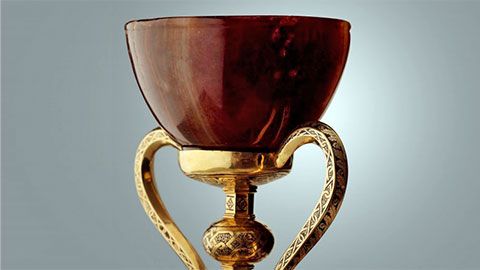
First there is the cup favored by the Vatican. It is a dark red agate cup now a chalice 7” tall, 3.5” across. It has been dated to have been created between the second century B.C and the first century A.D. and is housed in the Cathedral of Valencia. Pope Paul the II used this chalice during a Mass in 1982 and stated, “It was a witness to Christ’s passage on earth”. It was also used by Pope Benedict in 2006 where he referred to it as, “this most famous chalice”.
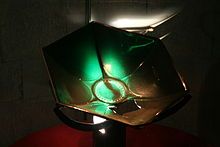
Coming in at second place is a chalice looking more like that of a flat Roman era dish. The word chalice originally meant a stone then later a dish that could be used to hold liquids. This chalice was originally thought to be carved from a large pure green emerald. It was documented as bring one of the spoils taken in the conquest of Caesarea in 1101. It was assumed to have magical powers but it was not thought to be a holy relic. However, in 1290 Jacobus de Voragin an Italian archbishop of Genoa chronicled it as such. It was captured by Napoleon in 1805, dropped while in his care and broke into two pieces. It was then discovered that the artifact was actually green Egyptian glass.
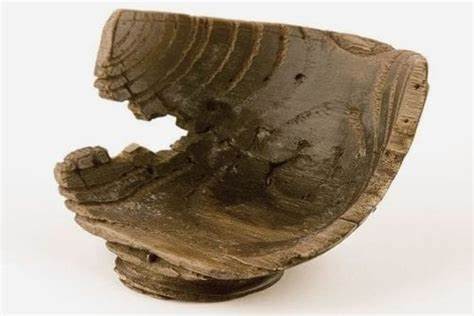
The third grail is a wooden cup known as the Nanteos Cup. It is in fact a medieval mazer bowl held in the Nanteos Mansion in Aberystwyth, UK. Since it is said to have been made from the wood of the cross, it could not have served as the cup used by Christ. Still, tradition states it possess healing powers. It came to be called a chalice in the early 20th century.
Traditionally Jews used wooden cups to perform ritual feast proceedings. The cups were usually made of acacia wood as was the Ark of the Covenant and the Showbread Table both of which were housed in the Temple's Holy of Holies room. This tree is commonly found in the Middle East and the wood contains a sap that makes it practically impervious to insects, water and rot. It is much like the wood of the cedar tree used to make fence posts that are slow to rot and storage trunks that repel insects. It was the thorny branches of this tree that were most probably used as the crown of thorns placed on the head of Jesus.
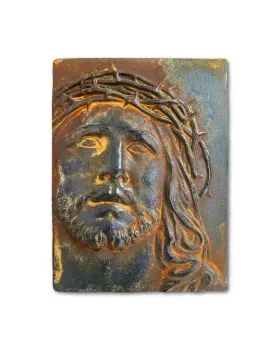
Thin squares of this wood were also used in conjunction with double headed nails to secure the wrists and each heel of Jesus to the cross. This understanding came from the excavating of the only Roman crucifixion nail ever found in the Middle East. It was discovered in an ossuary box still imbedded in the heel of a young first century Jewish male. It had traces of Acacia wood embedded in the microscopic pores of the iron and olive wood trapped in the bent point of the nail. On an interesting note, in 1990 the family tomb of the High Priest Caiaphas was found and excavated. A crucifixion nail was found in his bone box. A second nail was found on the floor of the tomb.
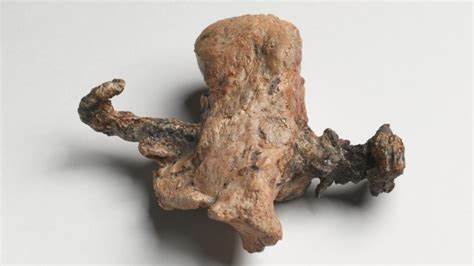
Today, archeologist are certain they know what material was used to create the Passover Supper cup. They have substantial evidence that in the final years of the last century B.C. and early first century A.D., the Jews of Judah for unknown reasons, developed a passion for ritual purity. The most expensive and complex outcome of this fad was the sudden construction of tens of thousands of household purity pools known as mitzvahs. These small pools of fresh water had occasionally been installed in the homes of some religious leaders and the wealthy but were now considered a must have in any home that could possibly afford one. These pools were located just below the surface of the ground and dug out of the soft Israeli limestone. Steps were created to allow the parishioner easy access to the water. Some pools were located out in the open adjacent to the house while others were made more private by being located in the home. In order to use the pool, an adult was first required to take a bath. Then they were allowed to enter the mitzvah and immerse themselves in its purifying waters.
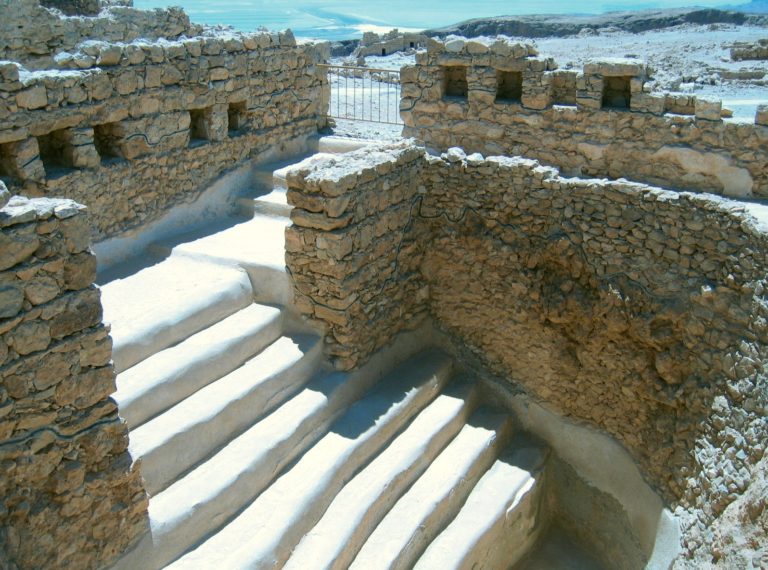
By Mosaic law, the mitzvah’s water could only come from a source where the water was free flowing and not from a static source such as in a pond, lake or oasis. Most Mitzvahs were designed to catch the runoff of rain water or take advantage of a nearby spring or creek. Well water could be used but was laborious as a way to fill the pool. Public mitzvahs had always been available and were located adjacent to local synagogues. Jerusalem is thought to have had approximately four hundred and eighty synagogues by the time of Jesus. The Temple in Jerusalem had installed many dozens of mitzvahs for the public to use before climbing the steps to the Temple Mount. In fact, the disciples used a recently excavated public mitzvah located adjacent to the Southern Steps of the Temple Mount to baptize three thousand people during the Feast of Pentecost in 33 A.D. But, the addition of private mitzvahs was something new. Apparently, Jewish worshippers wanted immediate access to a mitzvah to insure they were always spiritually obedient to the Law and physically clean in the eyes of God at all times. Sort of, when in doubt go to the mitzvah.
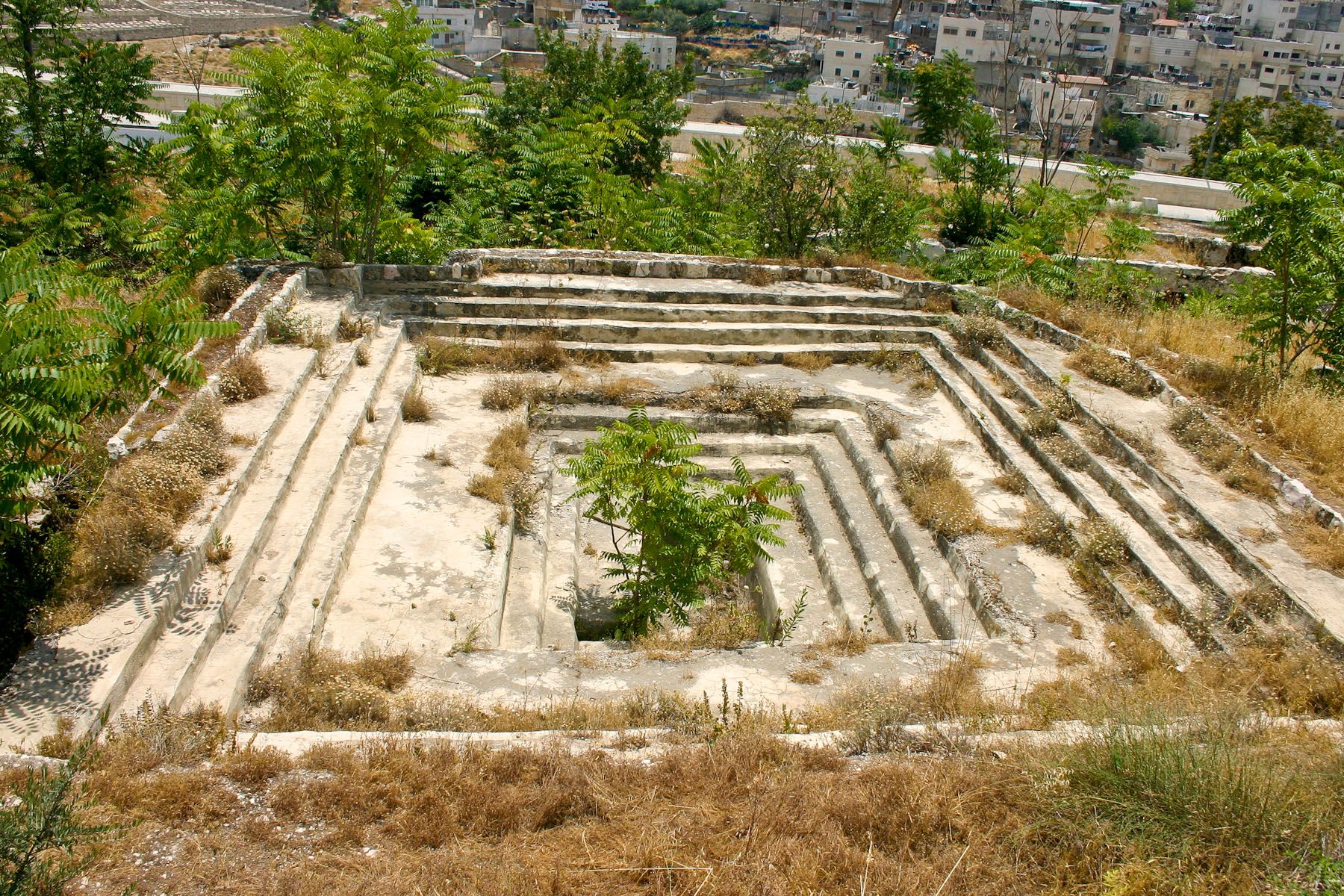
Another outcome of this national sweep of purity fervor involved the cups used by Jews. It is the material used to create these new improved cups that helps to quickly weed out the false contenders for the title of the cup used by Jesus during the Last Supper. Between 5 B.C. and 5 A.D. the religious leader were apparently presented with a peculiar purity issue concerning the cups used during the observance of the seven annual Jewish feasts. Some Jews were using cups made from olive or acacia wood while others used cups made from clay. But all of these types of cups were noticed as having a common problem when it came to ritual purity. It seems that when the ritual wine was poured into the cups, it stained the insides of the cups. And, even though the cups were washed according to the law using fresh water, the insides of the cups still retained stains created by the wine. This in turn meant that the wine used in previous services was being carried over by way of the stains into the news rituals thus creating a contamination issue. The Temple realized that an immediate solution was needed. After much deliberation, consulting Mosaic laws and prayers, it was decided that the only way to stop this contamination sacrilege would be to issue an edict that only cups carved out of a material that was impervious to staining could be used for ritual purposes. The material determined to be appropriate regarding this high standard was pure white Judean limestone. This type of stone was found near chalk deposits. Needless to say, an industry to produce limestone cups sprang up throughout Judah overnight.
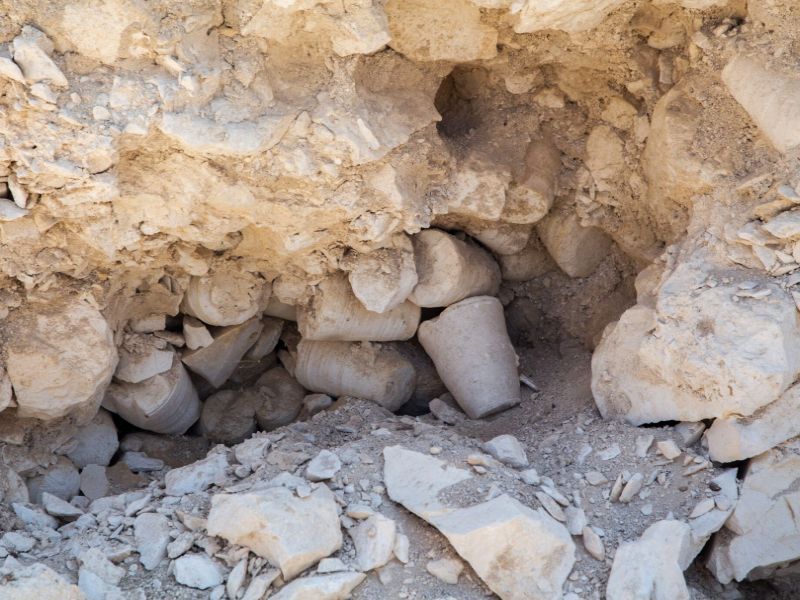
Today, archeologist have unearth numerous such workshops in and around chalk caves that still contain stacks of simple blocks of white limestone which are the first step of the stone cup making process. They also found blocks that had been carve into a calendrical shape with chiseled groves running down the sides and square handles. And last, they found cups that had been put on lathes in order to carve out the insides to create cups now ready to market.
So, what ultimately happened to the cup? As stated earlier, the owner of the room provided the place settings and meal. Then, after Jesus ended the supper and left for the garden to pray, the owner would have had servants quickly clean up the room. Thus, the cup Jesus personally used would have simply been mixed in with others and have lost any distinction it might have obtained having been used by Him.
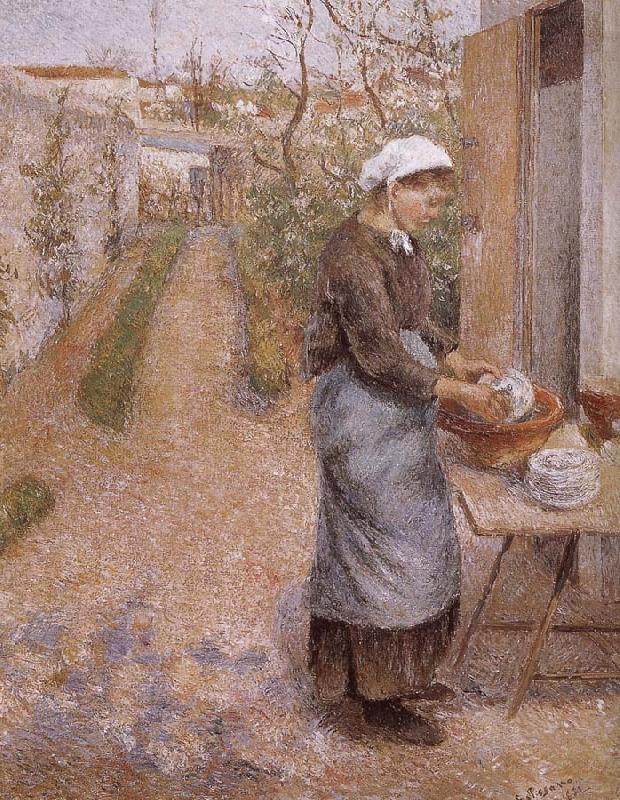
But this is not a bad thing as there can be no doubt that Jesus would never have wanted the cup He used to announce and commemorate a new covenant to become venerated and worshipped. It was never about the actual cup or the actual wine but what the wine in the cup represented. While Jesus made a brief mentioned of the cup He held in reference to the wine it contained, this is the first, last and only mention of this cup in scripture. The history of this cup is not commented on in scripture as it has no importance in the ministry of Jesus. It was simply a common everyday cup reused until it inevitably was dropped or developed a crack whereupon is was quickly disposed of and forgotten. However, the symbolism of the wine it held was not forgotten and had a major impact on the decline of Judaism, the destruction of the nation of Judah, the beginning of the Church Age, the eternal salvation of mankind and the history of the word from that time forward. Three hundred years later, Christianity would be declared the official religion of the Roman empire which had a profound effect on the world then and now. For the past two thousand years, Christianity has and remained the largest and fastest growing religion on earth. The cup is gone, but the words of promise made by Christ while holding a cup live on in the hearts of billions of Christians. In the words of Christ, “Heaven and earth shall pass away, but my words shall not pass away.”( Matthew 24:35)
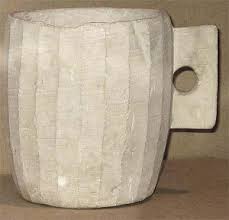
Today, we can know for certain that by 33A.D. all Jews under the Law would have used inexpensive and mass produced white stone cups. While they were allowed to use wooden or clay cups for everyday use, only a cup made of white limestone was officially approved for ritual purposes. So, while the cup that Jesus used was definitely made of stone and could have survived two thousand years, it is very doubtful that it was singled out and preserved. And, any cup that portends to be the cup and is made of anything other than limestone, could not possibly be the cup Jesus used no matter how old or bejeweled it is. And, since none of the cups said to be the Cup of Christ or the Holy Grail are made out of simple limestone, none of them is the actual cup.
That said, archeologist in Israel are continually digging up first century stone cups in and around Jerusalem. And, it is entirely possible that one of them might have been the one used at the Last Supper. So, the next time you are in a museum displaying one of these cups, look long and hard as it may very well be The Holy Grail of Christ.
If you enjoy the information provided on this site, please consider making a donation of any amount to help continue its production. Donate Now